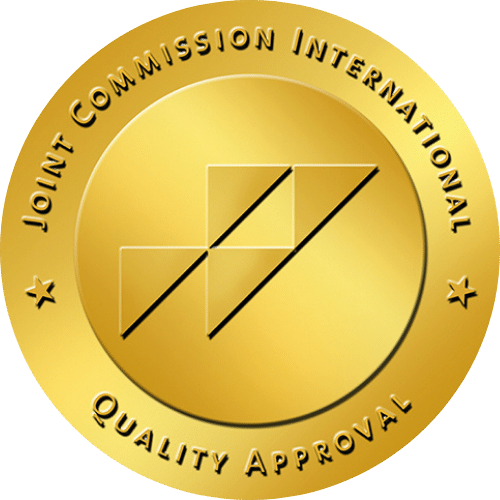4 min read
Principles of Neuroplasticity and Their Impact on the Brain
Have you ever stopped to think about how your brain manages to adapt when you learn something new or bounce back from an injury? It’s not magic, even if it feels like it sometimes. It’s called neuroplasticity—your brain’s amazing ability to reshape itself. Imagine your brain as a city where roads are constantly being rebuilt and rerouted to make traffic flow better. This is how your brain adapts, grows, and heals. But what makes this possible? Let’s dive deeper.
Harnessing Neuroplasticity for Success

What is Neuroplasticity?
Your brain isn’t a fixed machine; it’s more like a living artist, always redrawing its masterpiece. Neuroplasticity means your brain can change its structure and function in response to your experiences. Learning a new language, picking up a musical instrument, or recovering from brain injury—these all involve your brain rewiring itself.
Think about it like this: your brain is a stubborn toddler who doesn’t like change, but with patience and practice, it learns to dance to new rhythms. And the best part? This happens at any age.
How Neuroplasticity Works
Changes in Neuronal Connections
Imagine your neurons as chatty friends at a party. The more they talk and connect, the stronger their friendships become. When you practice a skill, these connections—called synapses—get stronger and faster, much like turning a bumpy dirt path into a smooth highway. This is why repetition is key; it helps your brain build reliable routes for new skills.
Ever noticed how playing a song or riding a bike becomes easier over time? That’s your neurons gossiping and bonding behind the scenes.
Neurogenesis and Brain Recovery
Here’s something that surprises many: your brain can actually grow new neurons, a process called neurogenesis. Scientists once believed adults couldn’t do this, but your brain proves otherwise—it’s more like a gardener planting new seeds where they’re needed most.
This is especially important when recovering from brain injuries. Your brain doesn’t just give up; it rewires itself to compensate, much like finding a new route when your usual path is blocked.
Examples of Neuroplasticity in Daily Life
Think back to when you learned to ride a bike. At first, it felt impossible, right? Your brain had to build new pathways to manage balance, coordination, and steering. After a few falls and a lot of practice, your brain rewired itself to handle it all smoothly.
Musicians offer another great example. Years of practice physically reshape their brains, enhancing areas related to motor skills and sound processing. If only I could grow a “guitar brain” overnight—life would be a concert!

How to Increase Neuroplasticity
Cognitive Exercises and Healthy Habits
Want to turbocharge your brain’s ability to change? Challenge it regularly! Learning new skills, solving puzzles, or engaging in meaningful social interactions act like workouts for your neurons. But beware, your brain isn’t a superhero—it needs rest and sleep to consolidate those new connections.
Imagine trying to build a house without letting the cement dry—skipping sleep is exactly like that.
The Power of Words and Neuroplasticity
Did you know that the words you say—to yourself or others—can literally shape your brain? Positive affirmations and kind self-talk encourage your neurons to form new, healthier pathways. It’s a bit like planting a garden with encouraging words rather than weeds.
Ever noticed how a compliment can brighten your whole day? That’s your brain responding to the magic of language.
Supplements for Neuroplasticity
Some supplements, like omega-3 fatty acids and certain vitamins, may support brain health and plasticity. Think of them as helpful assistants rather than miracle workers. No magic pills here, but combined with healthy habits, they can give your brain an extra boost.
Practical Applications in Neurological Rehabilitation
For those recovering from stroke or brain injury, neuroplasticity is a powerful ally. Therapies designed to harness this ability help patients regain lost skills by training the brain to find new pathways. It’s like teaching an old dog new tricks—or better yet, showing your brain some creative shortcuts.
Factors Affecting Neuroplasticity (Stress, Aging)
Stress and aging can throw a wrench into the neuroplasticity works. Chronic stress may slow down your brain’s rewiring, and aging naturally reduces plasticity. But the good news? Staying mentally active, managing stress, and maintaining a healthy lifestyle help keep your brain flexible longer than you might think.
Popular Brain-Boosting Supplements
| Supplement | Key Benefits | Advantages | Disadvantages |
| Omega-3 Fatty Acids | Supports neuron growth and repair | Well-researched, supports heart health | May cause fishy aftertaste |
| B Vitamins | Improves energy metabolism in brain | Helps reduce brain fog | Excess intake can cause nerve issues |
| Curcumin | Anti-inflammatory, may promote neurogenesis | Natural antioxidant | Low bioavailability without enhancement |
| Ginkgo Biloba | Enhances blood flow to the brain | May improve memory and focus | Potential blood thinning effects |
| Lion’s Mane Mushroom | Supports nerve growth factor (NGF) | Natural, few side effects | Limited clinical research |
Thinking about supplements? Remember, these are just tools to support your brain’s plasticity, not replacements for good habits or professional advice.
How often do you challenge your brain to change? Maybe it’s time to pick up that guitar, try a new language, or simply change your morning routine. Your brain will thank you by rewiring itself for a sharper, more adaptable you.
If you want to explore neurological testing or get personalized advice on boosting your brain’s health, don’t hesitate to reach out. Sometimes, the best way to start rewiring your brain is with expert guidance by your side. What’s your next step to unlock your brain’s potential?
Frequently Asked Questions About Neuroplasticity
What is the best way to enhance neuroplasticity in daily life?
The best way to boost neuroplasticity is by consistently challenging your brain with new activities—learning skills, solving puzzles, or engaging socially. Regular mental stimulation combined with healthy habits like quality sleep, balanced nutrition, and stress management creates an environment where your brain can build and strengthen new neural pathways effectively.
Can adults really grow new neurons through neurogenesis?
Yes, adults can experience neurogenesis, primarily in specific brain areas like the hippocampus, which is involved in memory and learning. While this ability decreases with age, it remains active and can be supported through physical exercise, mental challenges, and proper nutrition, helping the brain stay flexible and healthy.
Do supplements significantly improve neuroplasticity?
Supplements like omega-3 fatty acids, B vitamins, and curcumin may support brain health and plasticity, but they are not magic solutions. Their benefits are most effective when combined with a healthy lifestyle, including regular cognitive activity and good sleep. Always consult a healthcare professional before starting any supplement regimen.
How does stress affect the brain’s ability to adapt?
Chronic stress can impair neuroplasticity by disrupting neural connections and reducing the brain’s ability to rewire itself. Managing stress through mindfulness, relaxation techniques, and physical activity can help protect and even improve your brain’s adaptive capacity.
Is neuroplasticity helpful in recovering from brain injuries?
Absolutely. Neuroplasticity allows the brain to rewire and compensate for damaged areas after injuries such as strokes. Rehabilitation therapies leverage this ability by encouraging patients to practice specific tasks, helping to restore lost functions over time through repeated stimulation and training.

